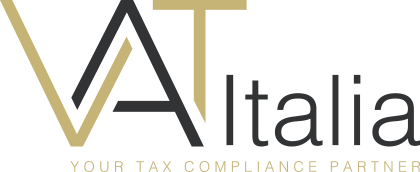Since the electronic invoicing debut, 34 million e-bills have already been sent through the Revenue Agency web-portal in the first 15 days, more than 2 million every 24 hours. From 1 January 2019 till now, the e-invoices sent to the Revenue Agency have reached the number of 34 million. An exponential growth, in fact in the first four days from the debut, the number of invoices was close to 2.8 million. Ten days later, in a single day, the number of electronic invoices received and worked by the Agency was at 4 million. Overall electronic invoices issued to date concern a taxable amount of 34 billion euros for a net-tax of 4.3 billion euros, while the operators involved have been around 700,000 (exactly 663.042).
Background – The e-invoice has been introduced trough the Italian Budget Law for 2018 (Law no. 205/2017), that modifying Legislative Decree no. 127/2015, added the obligation of electronic invoicing or e-invoicing. Particularly, starting from 1 January 2019, a general business to business (B2B) and business to customer (B2C) will apply.
The advantages of the electronic billing or e-billing – First of all, it is an easy and safe way to issue a bill. Instead of printing your bill and sending it by post to the Tax Administration, you send your billing information electronically. You save time and money, and your bill can be processed digitally in a quick and consistent manner. Particularly, the Advantages for you are the following: you save paper, printing costs, postage and packaging. In this way, e-billing does not just save costs, it is also environmentally friendly, because e-bills are sent and processed entirely electronically, processing speed is increased and sources of error are reduced.
How does it works, technical requirements for mandatory e-invoicing – The following requirements are applicable for all transactions: the transmission via the Interchange System (SDI) may regard either one single invoice or a group of invoices; the mandatory invoicing requirements also apply to e-invoices; the e-invoice shall be in the XML format without macro-instructions or executable codes that may impact the integrity of the invoice content; the e-invoice may include other fields/data that are not mandatory. In details, the e-invoice delivery via the SDI can be made alternatively by:
- Certified e-mail (PEC);
- Electronic services made available by the Italian tax authorities (web or app);
- Web cooperation system (web service);
- FTP protocol.
Both the web service and the FTP protocol require a specific application at the time of the registration with the SDI.
The Interchange System filtering – At this point, the SDI performs some formal checks at the time of the delivery. If the checks are not passed, a reject report is issued within five days from the delivery/upload into the SDI. In this case, the invoice is considered not issued. If the e-invoice includes a digital signature, the SDI performs some checks on the signature certificate validity.
The e-invoice delivering – The e-invoice can be delivered by/to an intermediary on behalf of the taxpayer/recipient. The way the recipient wants to receive the e-invoice must be indicated at the time of the application/registration on the SDI. When the checks of the SDI are passed and the e-invoice is delivered to the recipient, the supplier receives a delivery report including the date of receipt by the recipient.If the delivery of the e-invoices to the recipient is not possible, the SDI makes the e-invoice available to the recipient on the tax authorities web-site dedicated area and informs the supplier accordingly so he can timely inform the customer accordingly. For each file managed by the SDI an alpha-numeric code (hash) is generated and included in the delivery receipts generated.
Out of the e-invoice – For transactions not falling under mandatory e-invoicing (e.g., cross-border transactions), it is necessary to file a monthly communication (Spesometro) by the last day of the month following the invoice date. For import and export transactions where a Customs bill is issued and for cross-border transactions where the supplier opted for e-invoicing, the Spesometro communication is optional.
The electronically bills data checking – Since e-invoices are stored/kept by the Italian tax authorities, the authorities may access such e-invoices only after having served a specific communication to the taxpayer.


